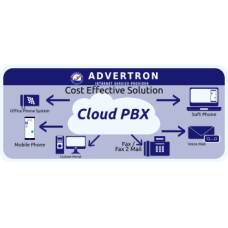VoIP TECHNOLOGY

A:
What if you could modernize your traditional phone system without breaking the bank?
SIP lines enable your landline phone to send and receive calls via the internet. That makes a huge difference from just relying on copper wires for your business communication needs.
How?
For one thing, traditional phone lines can only process voice data. By using SIP, your existing network cables carry multimedia signals for voice communications, instant messaging, and video conferencing.
For added capacity, you'll want SIP Trunking. A SIP Trunk can save your office communication system from becoming obsolete. It also makes scaling up far more cost-effective when you need extra telephone lines to support your business needs.
A single SIP trunk can have hundreds of SIP lines for additional call volume or more concurrent calls.
- IP (Internet Protocol): The standards used to transmit data reliably on the internet.
- ITSP (Internet Telephony Service Provider): A company that offers VoIP-based telecommunications services.
- PABX (Private Automatic Branch Exchange): A type of PBX that uses computers to automate the switching process.
- IP PBX (Internet Protocol Private Branch Exchange): A type of PBX that provides connectivity via the internet.
- PBX (Private Branch Exchange): A telephone network operated by a private organisation or business.
- POTS (Plain Old Telephone Service): The traditional landline-based phone service where calls are analogue in nature.
- PRI (Primary Rate Interface): A method to bundle multiple phone circuits, typically used by enterprises and offices.
- PSTN (Public Switched Telephone Network): The totality of the world’s circuit-switched telephone networks. PSTN is what many people know as a traditional phone system.
- SIP (Session Initiation Protocol): The standards used for signalling and handling voice, video, and other multimedia sessions.
- VoIP (Voice over Internet Protocol): A method of establishing phone calls over the internet.
A:
A SIP trunk refers to a communications medium that connects a company’s PBX or PABX to the web. It works like a digital version of the traditional phone line.
As its name suggests, a SIP trunk is analogous to a tree trunk that can have many branches. Each branch represents a unique line or a phone extension.
Many SIP lines can share a single SIP trunk. For example, a company can have one SIP trunk that is adequate to support many desktop phones, softphones, and mobile phones. Each phone call uses a single line that consumes a certain amount of bandwidth.
A:
A SIP line refers to a branch that comes from a SIP trunk. It is also called a channel or a session. SIP lines act as lanes that are used for exchanging communication data between two points or locations.
In a call session, a SIP line represents a unit capacity to support one incoming or outgoing call.
A very large number of SIP lines can be configured from a single SIP trunk. In VoIP call centres, one SIP trunk can hold hundreds of SIP channels. Each call takes up one channel. As such, most businesses generally need just a single SIP trunk to cover all their communication needs.
The exact number of SIP lines a company requires depends on the average number of concurrent calls it handles at any time in the workday.
Depending on the service provider (ITSP), a company can have a SIP trunking plan with:
- Unlimited SIP lines
- A fixed count of SIP lines with unlimited minutes
- A number of session minutes that can be distributed across an unlimited number of channels
- Multiple trunks for multiple offices where all users are on the same calling network
It’s easy to confuse SIP trunks with SIP lines. They can be interchanged in some contexts.
Think of it as a tree trunk vs. its branches
The basic analogy of a tree (trunk) with many branches (lines) should illustrate the difference between the two terms.
Knowing the difference matters when it comes to building and pricing out your phone service. A SIP trunk connects your business phone service with the PSTN via your internet service provider. A SIP line represents one call within a SIP trunk.
A SIP trunk has many lines, while a call takes up exactly one SIP line.
That means a company that generally handles 300 calls at any given time should look for a SIP Trunk service that can accommodate at least 300 SIP lines.
Even if you have 300 employees, they might not all pick up the phone at once. Audit your call logs over typical workdays to determine the actual capacity and need for lines. It's acceptable that only two-thirds of the company can dial out simultaneously. Want a second opinion on planning, consult with a Chief Information Officer, known as a CIO.
SIP trunking prices and monthly fees generally depend on the number of SIP lines you need. That means you need to estimate the average number of calls your company makes and receives each day. A log or record of inbound and outbound calls can help you arrive at a more accurate figure.
If you lack such records, then base your estimate on your line of business, location, and the number of employees. For example, a stout sales operation, customer support, or call centre operation might need at least one line for every seat in the team.
On the other hand, companies that are not as call-intensive might do with a line for every three or four employees. Remember to increase SIP lines when you approach 85% of their capacity and keep your network bandwidth in check.
It's only a matter of time before landline phones will become obsolete. Because you don’t want your business to go down with outdated technology, making the right investments now matters. With pretty much everything going digital, SIP trunking can help you thrive in the new economy.
- Easy Set-up/Low Maintenance. You don’t need physical phone lines and other hardware to install and maintain a SIP trunk. A reliable internet connection will do.
- Affordability/Lower Costs. SIP trunks can reduce phone service expenses significantly. In-network calls, as well as long-distance domestic calls, are free. Meanwhile, international calls cost a fraction of traditional fees.
- Scalability. Getting extra SIP lines is much easier than having a SIP trunk installed. All you have to do is inform your SIP provider — no need for additional hardware.
- Dependability. SIP trunks allow for better risk management through service redundancy and reliability. For example, you can have calls forwarded to secondary phones when a rare internet outage occurs.
- Enhanced Customer Service. SIP trunking gives you a full range of multimedia capabilities. This can improve sales, marketing, and customer service. In addition to voice services, you can include SMS texting, file sharing, and web conferencing in the package.
SIP trunking is an excellent investment for your team's productivity. Not all SIP trunk services are the same, though.
To get the best deal for your business, here are tips to evaluate and select a SIP provider:
- Audit your existing business communications network.
Are you already using VoIP or still struggling with POTS? - Define your business communication goals.
Think about headcount growth and additional locations. - Decide on the most important factors to guide your selection process.
Examine VoIP features, pricing, security, reviews, customer support, and location. - You need a PBX to install a SIP trunk.
A good SIP trunking service is compatible with your existing PBX equipment. - Read third-party review sites to assess different SIP trunking services and providers.
GetVoIP and G2 are quality sources to check. - Consult with several vendors to find a long-term solution.
Provide them details so they can get you the best price and capabilities. Test out their tech support. - Make an educated and informed decision.
Don't just decide on the price, but the overall partnership you're establishing.
A:
VoIP stands for Voice over Internet Protocol. ... A VoIP system works by taking your analogue voice signals, converting them into digital signals, and then sending them as data over your broadband line. It's a very useful way of making calls - for a start, once it's set up it's a lot cheaper than using normal phone lines.
Advertron ISP offers Voice over Internet Protocol (VoIP) technology that allows you to make calls using our Internet connection, rather than traditional copper lines.
With Advertron ISP VoIP, you can replace your outdated analogue phone with a future-proof pre-configured VoIP phone. Advertron ISP will supply you with a unique 087, 086, or 010 number, or you can make use of your existing landline number (Telkom landline) - the choice is yours!
 |
 |
 |
 |
Call History |
Use Your Existing Number |
Save On Your Telephone Bills |
No More Dealing With Telkom |
|
You have up to date history logs of incoming and outgoing calls. |
Upon signing up, you will be allocated a Voice number that you can use right away. You can choose to transfer your existing voice line number to Advertron ISP Voice service and cancel your old line and account. |
You can enjoy free calls to other users on the same Advertron ISP Voice network. Pay R0.46 per minute for all local and national calls, with the Advertron ISP Voice network. While Telkom charges R0.7245 for local and national calls and up to R1.50 to mobile numbers. |
You deal with us and only with us! If you choose to transfer your current landline, you can cancel your provider. Everything you will need to use your VoIP phone, you can do via your VoIP interface or, through our support experts. |
NETWORK |
PRICE |
| Cell C | R0.77 per min |
| MTN | R0.59 per min |
| Telkom Local | R0.46 per min |
| Telkom Mobile | R0.82 per min |
| Vodacom | R0.59 per min |
| Voip Providers | Variable |
| International | Variable |
PRODUCT / SERVICE |
STANDARD PBX |
| Abbreviated Dailing |  |
| Auto Attendant(IVR) |  |
| Call Queues |  |
| Music on Hold |  |
| Call Logs |  |
| Hunt Groups |  |
| Call Recording | Refer to Call Recording Rates |
CALL RECORDING STORAGE SPACE |
SETUP |
MONTHLY PRICE |
| 1 GB [Estimated 8 Hours] | Free | R 60.90 |
| 5 GB [Estimated 40 Hours] | Free | R 127.20 |
| 10 GB [Estimated 80 Hours] | Free | R 182.65 |
| 25 GB [Estimated 200 Hours] | Free | R 263.85 |
| 50 GB [Estimated 400 Hours] | Free | R 439.75 |
| 100 GB [Estimated 850 Hours] | Free | R 615.60 |
| 250 GB [Estimated 2100 Hours] | Free | R 879.45 |
| 500 GB [Estimated 4250 Hours] | Free | R1555.90 |
| 1000 GB [Estimated 8500 Hours] | Free | R1758.85 |
Telephone Numbers
PRODUCT / SERVICE |
SETUP |
MONTHLY PRICE |
| South Africa DID / Per Telephone Number | Free | R 12.20 |
| South Africa Ported DID / Per Telephone Number | R350.00 | R 12.20 |
| Cloud PBX Pakages, or SIP Trunks | ||
| Per Extension | Free | R 26.45 |
After you place your order and paid for it, visit "My Account" > "My Orders" > "Downloads", to download the application form that needs to be completed and returned with the necessary documents to comply with the service and product purchased.

